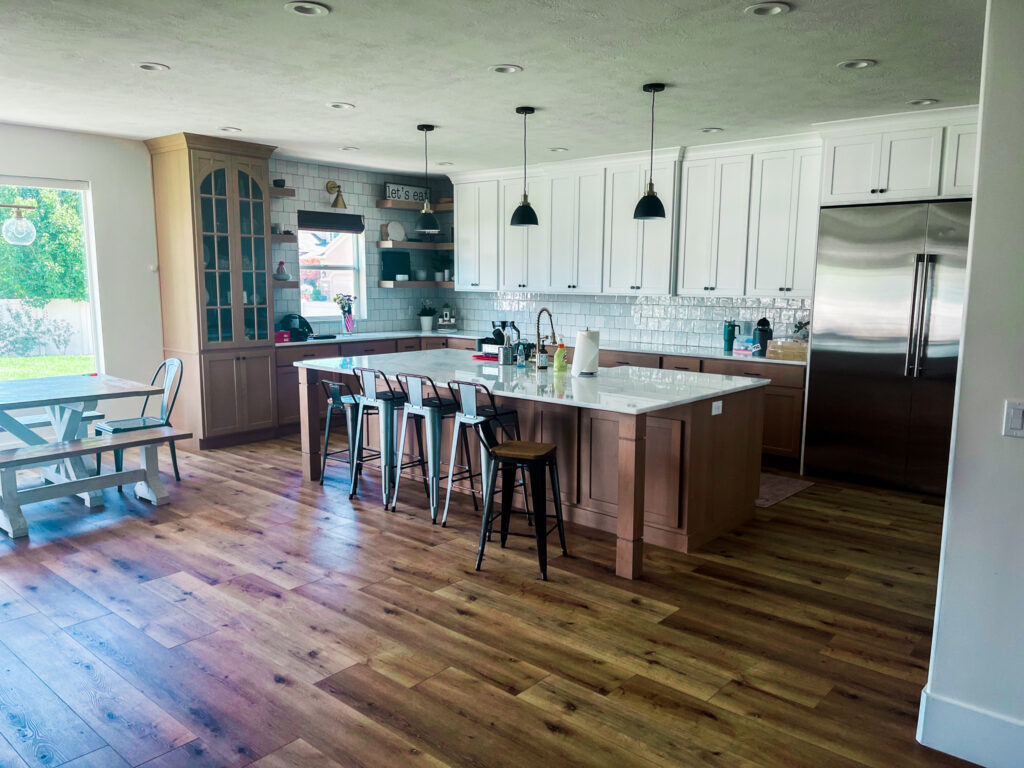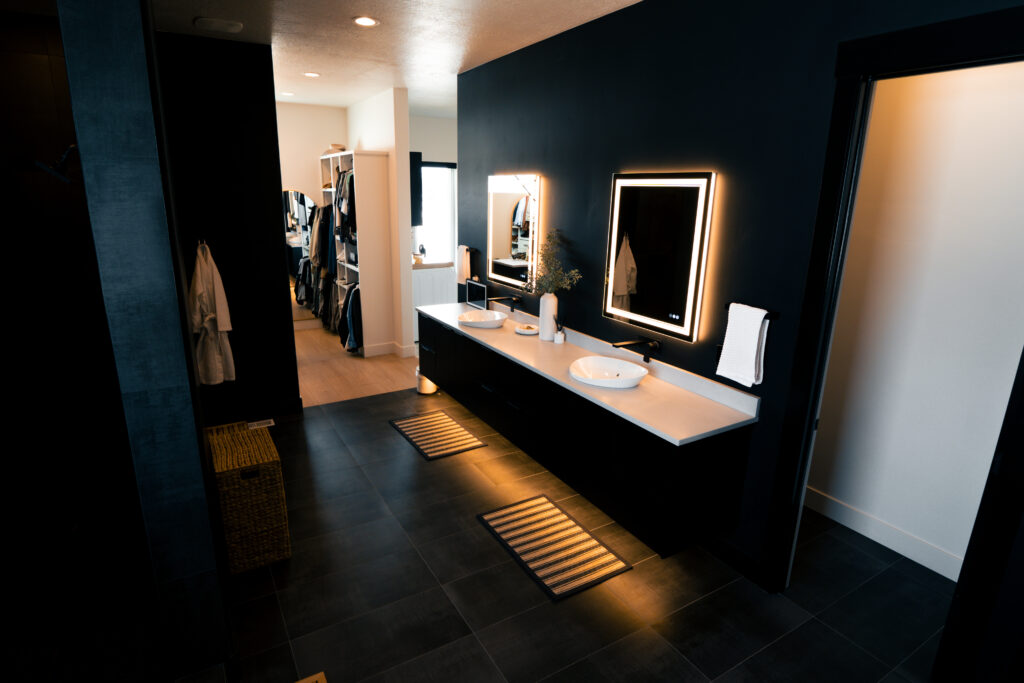When building your custom dream home, knowing how to make a floor plan is the crucial first step that transforms your vision into reality. A thoughtfully designed floor plan serves as the foundation of not just the physical structure, but of your daily life for years to come.

What is a Floor Plan?
A floor plan is a scaled diagram showing a room or building viewed from above, illustrating the relationships between rooms, spaces, and physical features as seen from a bird’s eye view. Floor plans include the layout of walls, doors, windows, stairs, and fixed elements like cabinets, furniture and fixtures. More than just a technical drawing, a floor plan communicates how people will move through the space, how rooms connect to one another, and how the overall design supports your lifestyle. Whether you’re designing a compact living room or mapping out your entire house plan, a well-conceived floor plan is essential for visualizing your space before construction begins.
The Essentials of How to Make a Floor Plan
Creating an effective floor plan requires balancing creativity with practical considerations. Whether you’re working with a professional or exploring the process yourself, understanding the fundamentals of how to make a floor plan will help you achieve the best results.
Step 1: Define Your Needs and Vision
Before drawing a single line, consider how you live and what you need from your home. When learning how to make a floor plan, this discovery phase is crucial for identifying:
- Number and types of rooms required
- Desired traffic flow patterns
- Privacy requirements
- Natural light preferences
- Special features or unique spaces
You can start the process by finding a design software or using graph paper to start the process. Free online software can help you begin the design process by mapping out the layout, room sizes and shape, and special architectural features.
Many people start with a rough sketch on graph paper before moving to more precise diagrams. Once you have your basic floor plan, you can go to a professional who can create an accurate floor plan with your design.

Step 2: Develop Your Design Concept
Once you understand your needs, the creative development begins. Professional designers know how to make a floor plan that blends aesthetics with functionality by:
- Optimizing connections between spaces
- Creating logical room relationships
- Establishing comfortable proportions
- Planning for furniture placement and furniture layout
- Incorporating sight lines and views
The interior design of the house is good to know before you begin to build your house. A house is an investment in you and your family’s future, so it’s a good idea to hire an interior designer to help bring your vision to life. They can help with furniture arrangement and ensuring each room, from the living room to the master bedroom, reflects your style while remaining functional.
Step 3: Refine with Technical Precision
Transforming concepts into buildable plans requires technical expertise. Mastering this stage involves:
- Precise measurements and dimensions of interior and exterior walls
- Structural considerations for wall measurements
- Building code compliance
- Utility and mechanical systems integration
- Detailed specifications for construction including stairs, fixtures, and architectural elements
What Makes an Exceptional Floor Plan
Understanding how to make a floor plan that truly enhances your lifestyle means incorporating these key elements:
- Intuitive traffic patterns for effortless daily movement between spaces
- Strategic room relationships that improve livability in the entire house plan
- Thoughtful storage solutions integrated into the design, including cabinets
- Flexibility to accommodate different layouts and movable furniture over time
- Harmonious connection between indoor and outdoor spaces

The Value of Professional Floor Planning
While many wonder how to make a floor plan on their own using floor plan templates or simple floor plan tools, professional design services offer tremendous value. Working with an architect or design specialist typically ranges from $1,500 to $3,000 depending on complexity, but this smart investment:
- Prevents costly construction modifications
- Maximizes your property’s functionality with pertinent furniture properly placed
- Creates a cohesive aesthetic throughout the home
- Optimizes energy efficiency through thoughtful design
- Ensures your home truly reflects your lifestyle
Creating Your Custom Floor Plan
Learning how to make a floor plan is about more than arranging rooms—it’s about designing how you’ll live in your new home. Whether you’re building new or renovating an existing floor plan, a custom floor plan ensures your space becomes a perfect expression of who you are.
Ready to discover how to make a floor plan that transforms your vision into reality? Contact us today for a consultation, and let our team of experts guide you through the design process of creating a space as unique as you are—from the initial scaled diagram to the finished masterpiece.


